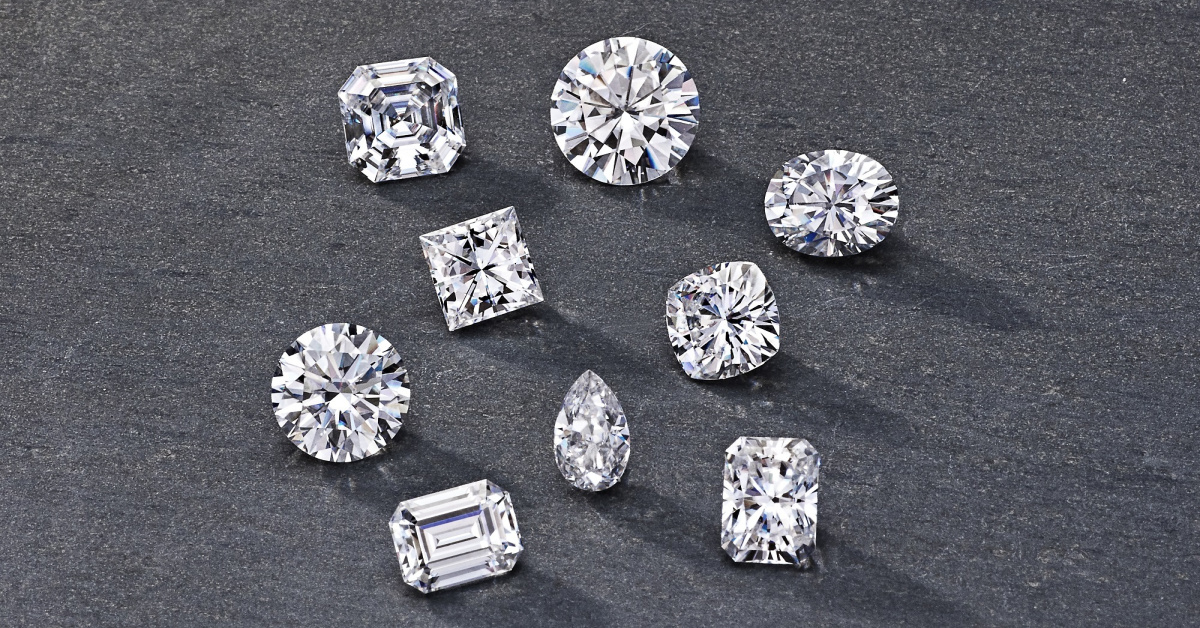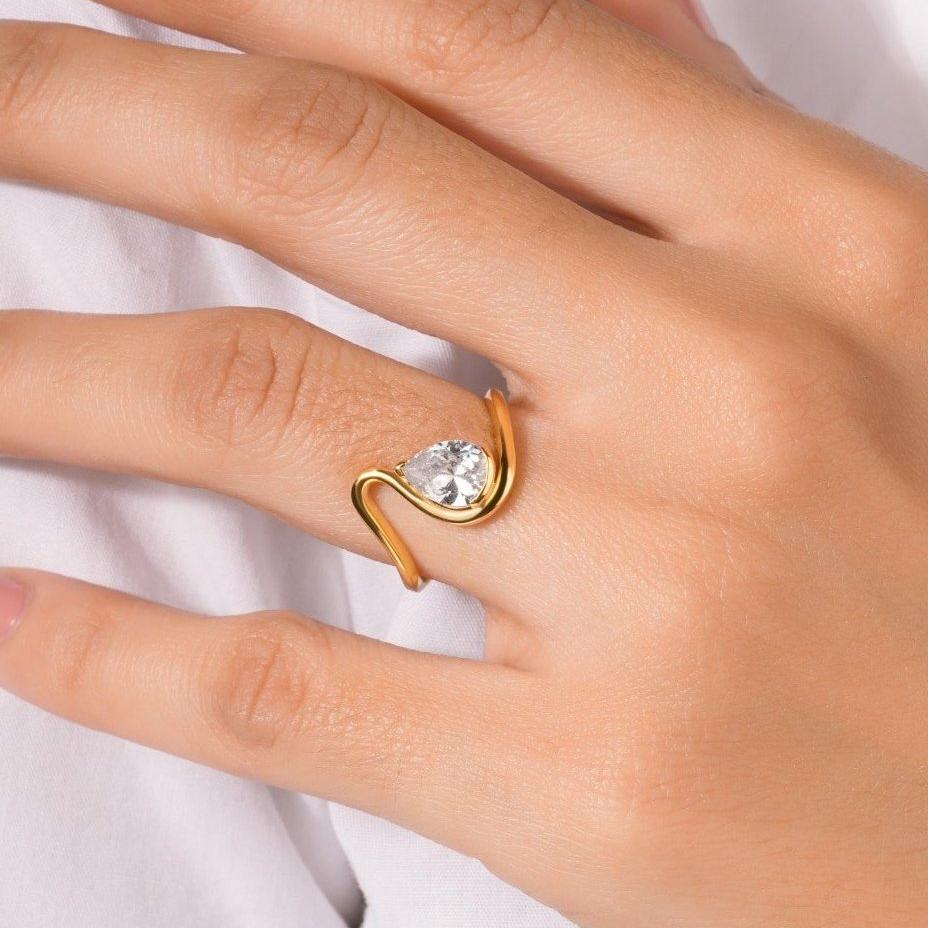Lab grown diamonds have rapidly gained popularity for their ethical sourcing, environmental benefits, and stunning beauty. These diamonds are chemically, physically, and optically identical to their mined counterparts. However, like natural diamonds, lab grown diamonds can also contain inclusions. Inclusions in lab grown diamonds refer to internal imperfections that occur during the diamond’s formation process. In this article, we will explore the different types of inclusions in lab grown diamonds, how they affect the diamond’s value, and what you should know when buying a lab grown diamond.
What Are Inclusions in Lab Grown Diamonds?
Inclusions in lab grown diamonds are natural imperfections or foreign materials that become trapped inside the diamond during its creation. These inclusions can occur due to various factors during the growth process, whether the diamond is being formed naturally or in a laboratory setting. While they are typically not visible to the naked eye, inclusions can affect the overall clarity of a diamond and influence its value. These internal features, such as tiny crystals or gas bubbles, are present in nearly every diamond, including both mined and lab grown diamonds.
Inclusions in lab grown diamonds are similar to those found in natural diamonds, as they are created through the same crystallization process. The primary difference is that lab grown diamonds are formed in a controlled environment, which allows for more precise monitoring of their growth. However, despite the controlled conditions, inclusions still occasionally form due to factors like the temperature and pressure inside the lab.
The Impact of Inclusions on Lab Grown Diamonds’ Clarity
One of the most significant factors that affect the appearance and value of a diamond is its clarity, which is largely determined by the presence and visibility of inclusions. The Gemological Institute of America (GIA) and other grading organizations evaluate diamonds on a scale of clarity, ranging from flawless (no inclusions visible under magnification) to included (inclusions visible to the naked eye). The clearer a diamond is, the more valuable it is.
Inclusions in lab grown diamonds can impact their clarity grade, which in turn can affect their market price. Diamonds with fewer inclusions and higher clarity are generally more expensive. For instance, a flawless lab grown diamond is considered rare and valuable, while diamonds with more noticeable inclusions may have a lower price point. It’s important to carefully inspect the diamond’s clarity grade and understand how inclusions may affect its appearance.
Types of Inclusions in Lab Grown Diamonds
Inclusions in lab grown diamonds come in various forms, each contributing to the diamond’s overall appearance. Some common types of inclusions found in lab grown diamonds include:
- Crystal Inclusions: These are small mineral crystals trapped within the diamond during its formation. They can appear as tiny specks of colorless or colored material.
- Cloud Inclusions: A cloud refers to a group of fine inclusions that create a cloudy appearance when viewed under magnification. These clouds can sometimes impact a diamond’s clarity and brilliance.
- Feather Inclusions: Feather inclusions look like small cracks in the diamond, resembling a feather’s shape. While they are typically internal, they can occasionally affect a diamond’s durability if they are large or located near the surface.
- Needle Inclusions: These long, thin inclusions resemble needles and are typically microscopic in size. Needle inclusions are often transparent and don’t significantly affect a diamond’s appearance but may impact its clarity grade.
- Pinpoint Inclusions: These are tiny, point-like inclusions that are often not visible to the naked eye. Pinpoints may have a minimal impact on the diamond’s clarity and are generally considered minor.
Understanding these types of inclusions can help you choose a lab grown diamond that meets your preferences and budget.
How Inclusions Affect the Value of Lab Grown Diamonds
Inclusions in lab grown diamonds play a major role in determining the value of the stone. As mentioned earlier, diamonds with fewer or less visible inclusions typically have higher clarity grades, which results in higher prices. However, it’s important to note that inclusions don’t always have a significant negative impact on the appearance of a diamond. In many cases, the inclusions are microscopic and can only be detected under magnification. These diamonds still maintain their brilliance and sparkle, making them an excellent option for those on a budget.
When evaluating the value of a lab grown diamond, it’s crucial to consider not only the clarity grade but also the size, color, and cut of the diamond. A well-cut diamond with a few minor inclusions can still be stunning and offer great value compared to a diamond with more visible inclusions. Therefore, it’s important to balance the clarity with the other factors that contribute to the diamond’s overall quality.
How to Minimize Inclusions When Buying Lab Grown Diamonds
If you’re in the market for a lab grown diamond and are concerned about inclusions, there are several things you can do to minimize their presence. First, be sure to work with a reputable jeweler or diamond retailer who provides detailed information about the diamond’s clarity grade and any inclusions that may be present. A trusted jeweler will also offer diamonds with GIA or other certifications that clearly outline the diamond’s characteristics, including its clarity and inclusion details.
You may also want to consider purchasing a diamond with a clarity grade that meets your preferences while being mindful of your budget. While diamonds with no inclusions may be ideal for some buyers, diamonds with minor inclusions can still be breathtaking when viewed with the naked eye and may be more affordable.
It’s important to understand that inclusions are part of the natural formation process of lab made diamonds. Even though they may affect a diamond’s appearance and value, they do not take away from the diamond’s overall quality or beauty.
Are Inclusions in Lab Grown Diamonds a Problem?
Inclusions in lab grown diamonds are not necessarily a problem, especially when they are small or located in less visible areas of the stone. Many buyers are unaware of the inclusions in their diamonds because they are often not visible to the naked eye. In fact, some inclusions can even add to the uniqueness and character of a diamond. Just like natural diamonds, each lab grown diamond is one-of-a-kind, and the inclusions give the stone its individual personality.
However, large or visible inclusions that detract from the overall appearance of the diamond may impact its aesthetic appeal. It’s important to assess the size and visibility of the inclusions before making a purchase to ensure the diamond meets your personal preferences.
Conclusion: Are Inclusions in Lab Grown Diamonds a Concern?
Inclusions in lab grown diamonds are a natural part of the diamond formation process, whether they are grown in a lab or mined from the Earth. While inclusions can affect a diamond’s clarity grade and overall value, they are not necessarily a problem if they are small or hidden from view. In fact, many lab grown diamonds with minor inclusions can still possess stunning brilliance and sparkle, offering excellent value for consumers.
When purchasing a lab grown diamond, it’s important to consider the type, size, and visibility of inclusions and weigh them against other factors like cut, color, and carat weight. By understanding how inclusions impact a diamond’s appearance and value, you can make an informed decision when buying a lab grown diamond that fits both your budget and style preferences. Ultimately, inclusions in lab grown diamonds do not diminish the beauty or value of the stone—rather, they contribute to the uniqueness of each diamond.



